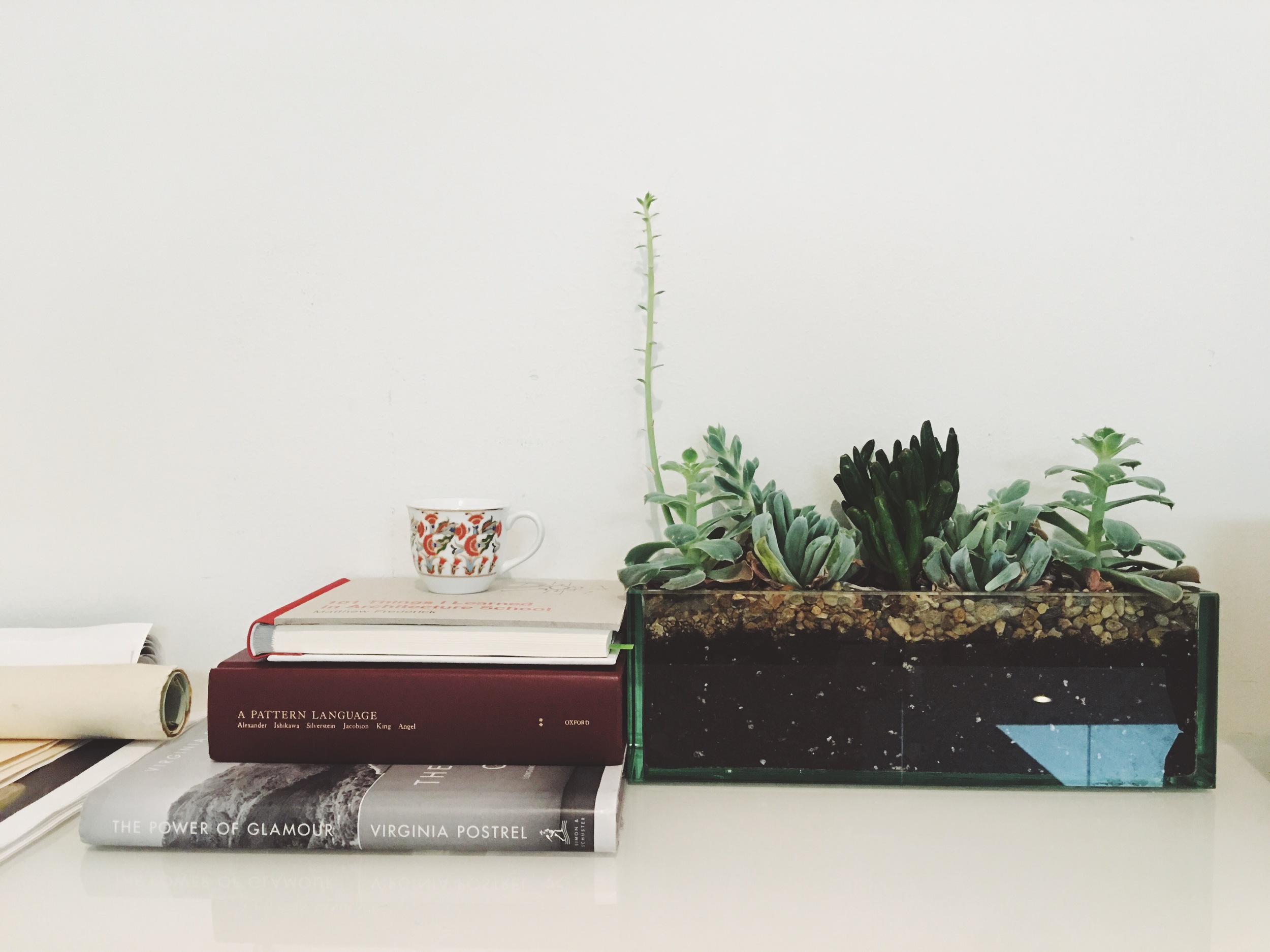What we want is so rarely what we get. There is no small degree of sadness in that. But there is no small degree of joy in it, too. And beauty is the place where joy and sadness intersect.
I think I can elaborate with a twofold plant metaphor. Stick with me... A few of my coworkers have picked up on my love for succulents. Three separate plants are now making their green little marks on the world of my desk, and each one was a gift. They were chosen when I was having especially bad days, and they were given with a care that is rare and remarkable to me. So the first level of the metaphor is: had I had the days I wanted, it’s improbable those gritty plants would be sitting in front of me as I write. I love them; they remind me of human kindness, the verdure of life, and the endurability of the spirit. I would not have chosen them; that would have entailed choosing the imperfection of days, and we generally lack the clairvoyance to embrace imperfection for, say, the joy a plant might bring.
The second level of the metaphor lies in the plants themselves. One of them lives in a terracotta pot that is a shoddy piece of semi-functional imperfection at best. It was a cheap plant, the soil is rock hard, and water drains straight out of the pot, so I’ve had to use a saucer that belongs to an espresso cup to catch the excess moisture. The larger leaves at the base of the plant are dying or dead. They remind me alternately of old leathery smokers and acne-ridden teenagers. The top half of the plant, though, is smooth and symmetrical and lovely, made even more so by contrast. Another of my succulents is actually an arrangement of five, and the fifth succulent to the far left has grown overeager and sprouted off a shoot that rises a good five-and-a-half inches above the rest. It looks ridiculous. I am annoyed by its autonomous climb, but I admire the tenacity of its endeavor. The damn thing has taken on a personality, and I’m now inspired by something that’s referred to as a “fat plant.” I recognize the absurdity in my begrudging respect and genuine affection for some potted plants, but I also regard it as a small miracle. “There is no exquisite beauty,” as Edgar Allan Poe puts it, “without some strangeness in the proportion.”
At some point these plants will die. I know this because everything does, and also because much as I love them and much as I try, my penchant for pernicious plant-care dies harder than they will. They remind me, though, of what we do and why. Much like a succulent, the spaces we design are meant to last. They are meant to rise up out of the dirt and dust and ash as anchors that will not blow away and will not let us blow away. They are not meant to last forever because they cannot. They have flaws, and there will always be some thing that could have been done better or done differently or that could be added or should be taken away. They are imperfect, impermanent, incomplete things, much like the people they shelter. The Japanese call this wabi-sabi, and they believe that it is beautiful. So do I.
And so, too, does the firm. I’ve said it before with their blessing, and I’ll say it again: the world is a messed up place. Sometimes it’s so messed up that the brokenness feels irrevocable—like it’s all just cracking and splitting and splintering into a shuddering nothingness, and someday all that will be left is the memory of how we didn’t love each other and we didn’t love our Earth. If that doesn’t weigh heavy on you, you’re not paying attention. It’s a sad, heavy conviction that should rest sad and heavy in your bones. But the world is also a remarkable place. A place where plants have learned to store water in their skin so that the scorched, dry earth can’t lick them; where people choose kindness even when it costs them everything; where art and literature and music and architecture embrace those parts of us that we ourselves don’t understand and push us forward, forward, forward until it’s time to relinquish our last breath to the next generation, who will hopefully choose again and again to love their own joy and sadness as a place where beauty has come to meet them.
This might sound like a load of sentimental bull, but it’s the most no-bull thing I’ve landed on so far—the thing we fight to believe every day as we draw and we type and we tear down and we rebuild and we bite our tongues and we hold our breath and we try to find a way to love and make sense of the unlovable and the incomprehensible. We don’t do it perfectly any more than we design perfectly. But this, too, is wabi-sabi, and it is beautiful.
—Emma Hamblen, Executive Assistant






